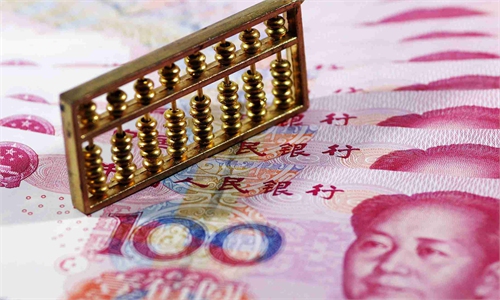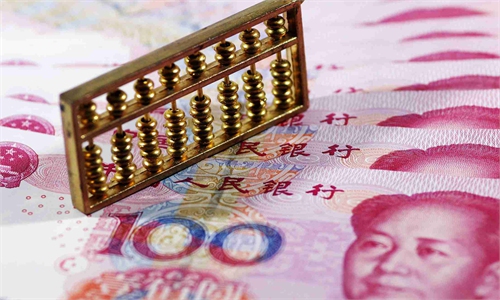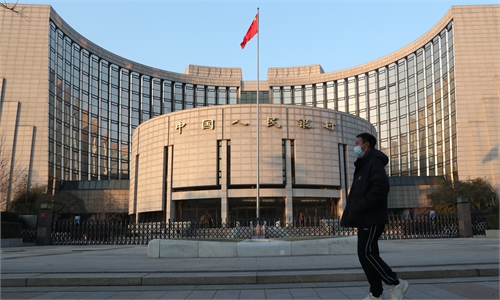
Illustration: Chen Xia/GT
The global interest rate cutting cycle seems to be picking up steam. Despite rising uncertainties in global financial markets, the yuan's exchange rate is expected to remain stable, with fluctuations within a reasonable range.The yuan has strengthened against the US dollar in both the onshore and offshore markets in recent weeks, aided by the greenback's broad weakness. The offshore yuan has reportedly gained 1.65 percent against the US dollar since July 22.
On Monday, the yuan's central parity exchange rate against the US dollar stood at 7.1345, or 31 pips stronger than the previous trading day, according to the China Foreign Exchange Trade System.
Recent changes in the yuan's exchange rate have attracted widespread attention both at home and abroad. Its appreciation has sparked discussion, including how the exchange rate will change in the future, amid increasing volatility in global financial markets as well as changes in interest rates and asset prices.
With inflation now falling in some of the world's developed economies, attention has turned to when they should start cutting rates to stimulate economic growth, and how fast they will ease their monetary policies. Central banks in some developed countries face the monetary policy challenge of determining the right level of short-term interest rates. There is great uncertainty about their monetary policies.
If inflation keeps cooling and if the economy stays strong, then there's a good chance of a rate cut, but things don't always go smoothly. Interest rate uncertainty is expected to fuel the volatility of all financial asset prices and hence has significant implications.
The external environment is becoming more complex. As global financial markets have entered a period of uncertainty and volatility, China has the ability and conditions to keep the yuan exchange rate basically stable. China's cross-border capital flows have remained steady overall, and the foreign exchange market has shown a basic balance in supply and demand.
The Communist Party of China leadership held a meeting on July 30 to analyze the economic situation and set out priorities for the second half of this year. The meeting stressed that China should maintain the basic stability of the yuan's exchange rate at a reasonable and balanced level.
Compared with other major world currencies, the yuan has been stable against the US dollar, thanks to the country's timely and appropriate macroeconomic policies, sound economic growth and long-term development potential.
It is normal that we have seen an appreciation of the yuan against the US dollar in recent weeks. The appreciation is the result of multiple factors, including market confidence in the Chinese economy and a weakening US dollar. The US economy suffered an unexpected setback in July. Nonfarm payrolls grew by just 114,000 in the month, below the downwardly revised 179,000 recorded in June. As a result, the US dollar has shown a weakening trend.
A quick appreciation of the yuan may deal a blow to China's exports, as such a move will put additional cost pressures on Chinese exporters and weaken their competitiveness against exporters from other economies. But it's too soon to worry about that. Currently, fluctuations in the yuan's value are small, and they won't affect the stability of the foreign exchange market or have an impact on the real economy.
There's no need to read too much into or make a big fuss about some short-term volatility of the yuan. The resilience of the Chinese economy and investor confidence in China's economic prospects will offer a solid foundation for the yuan's exchange rate in the medium and long term.
The author is a reporter with the Global Times. bizopinion@globaltimes.com.cn



